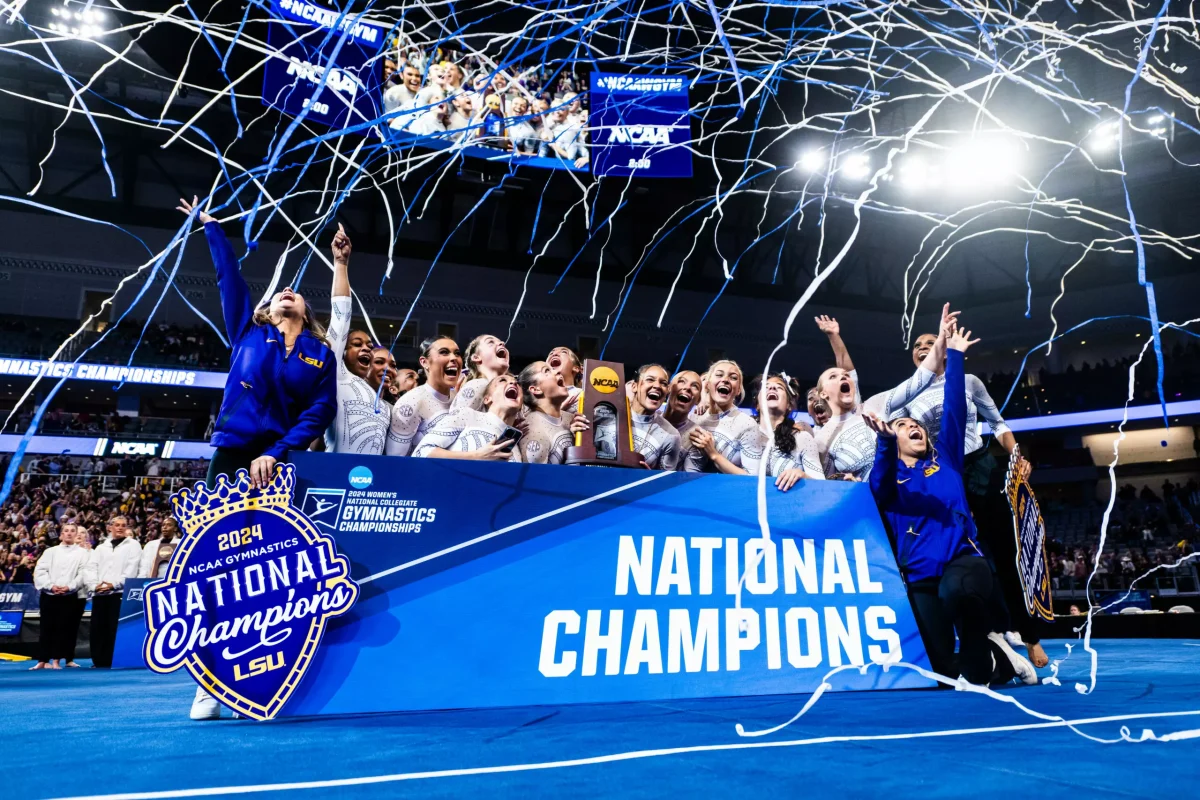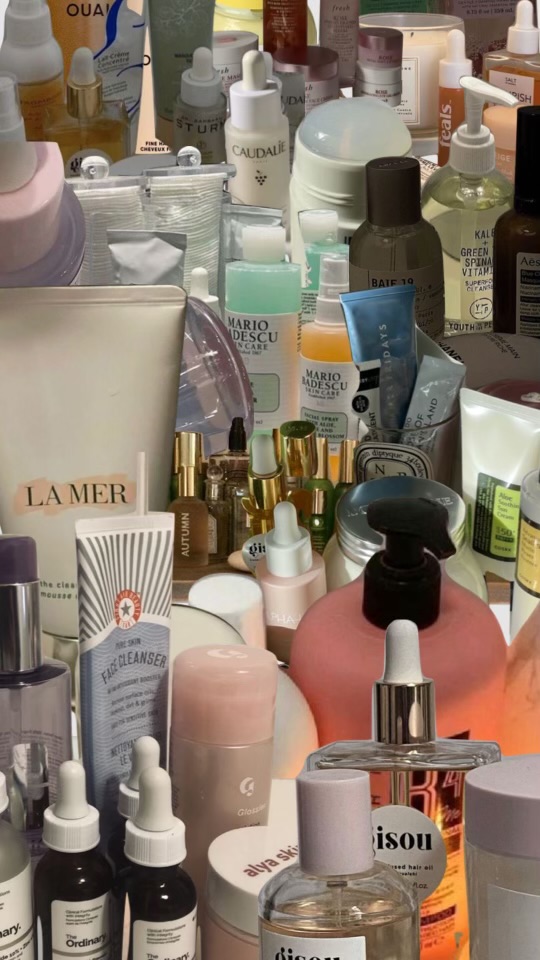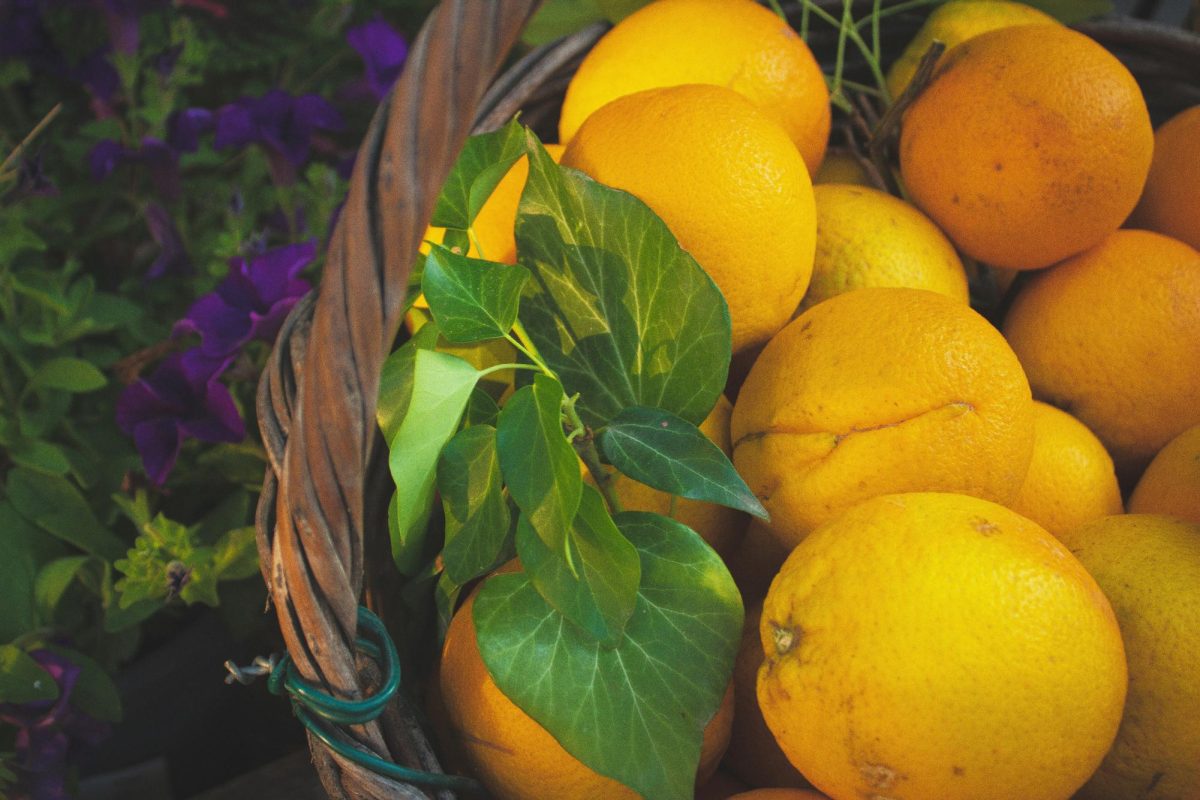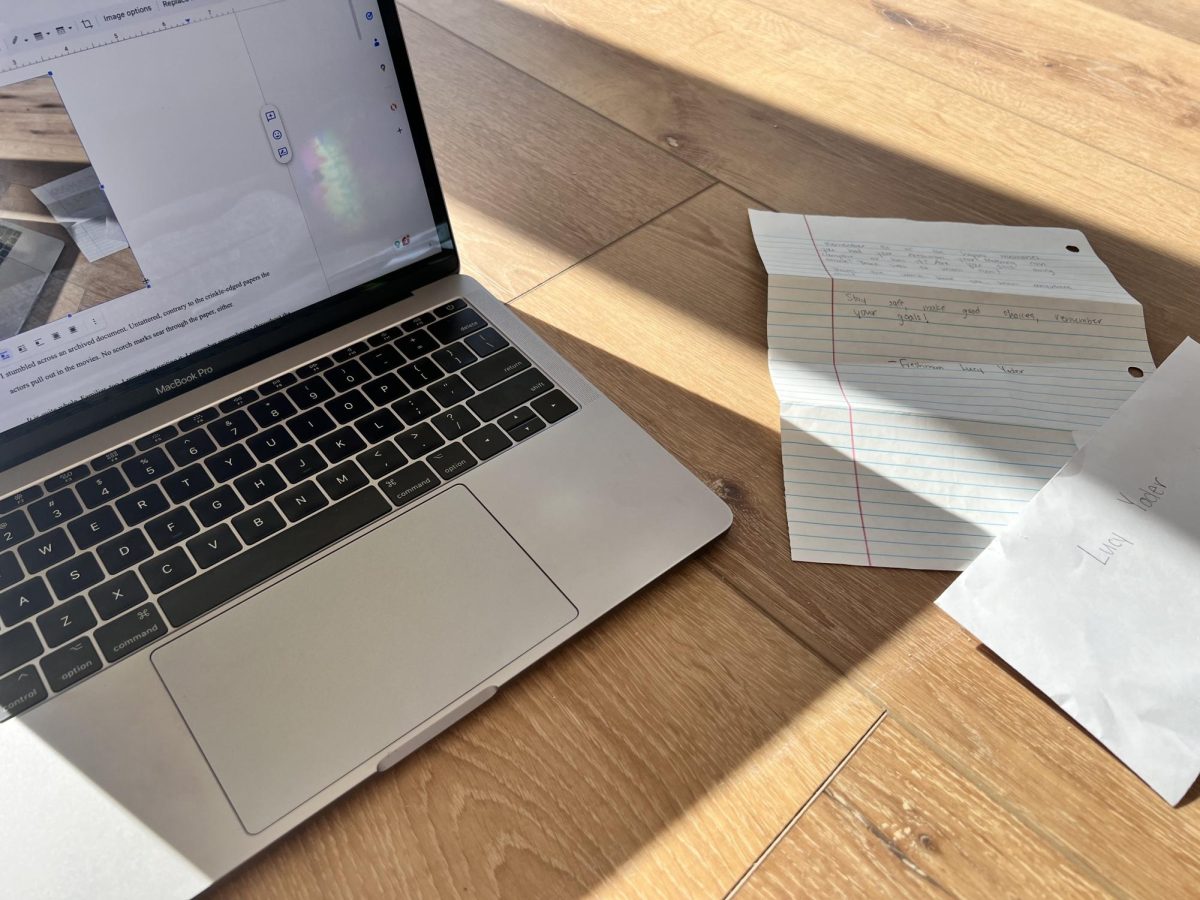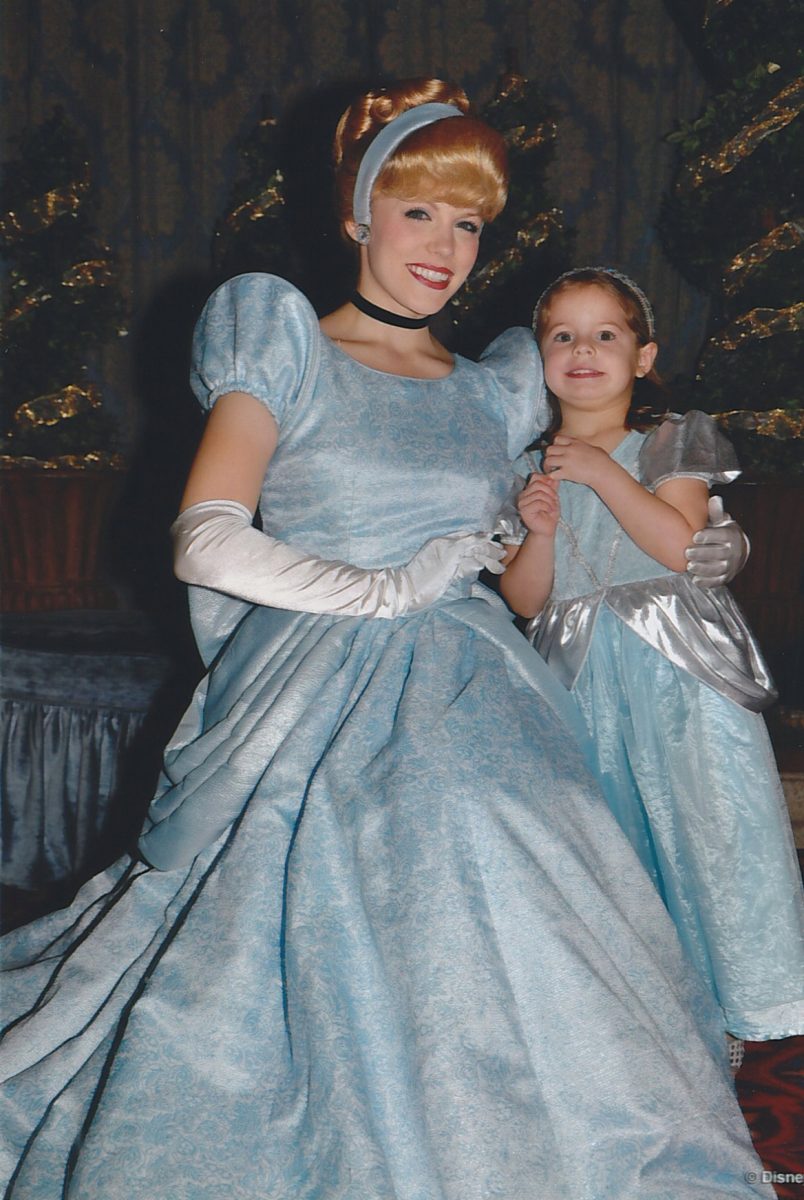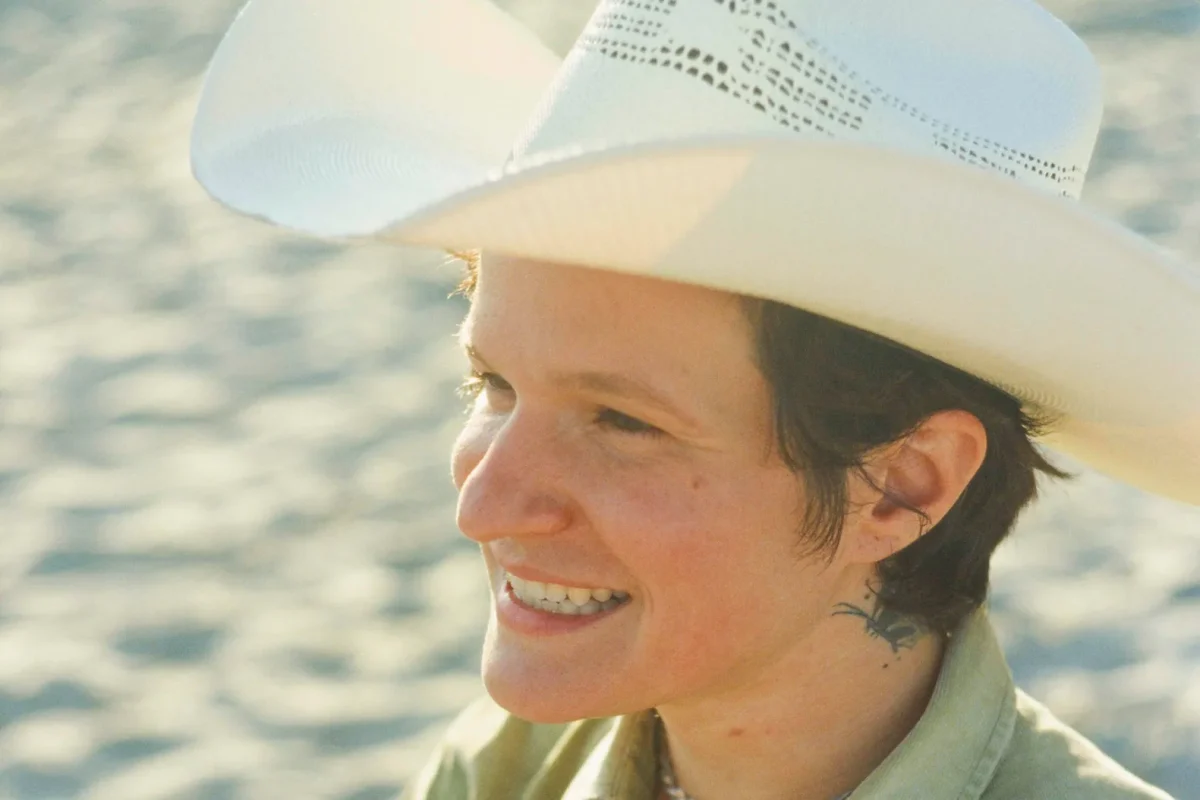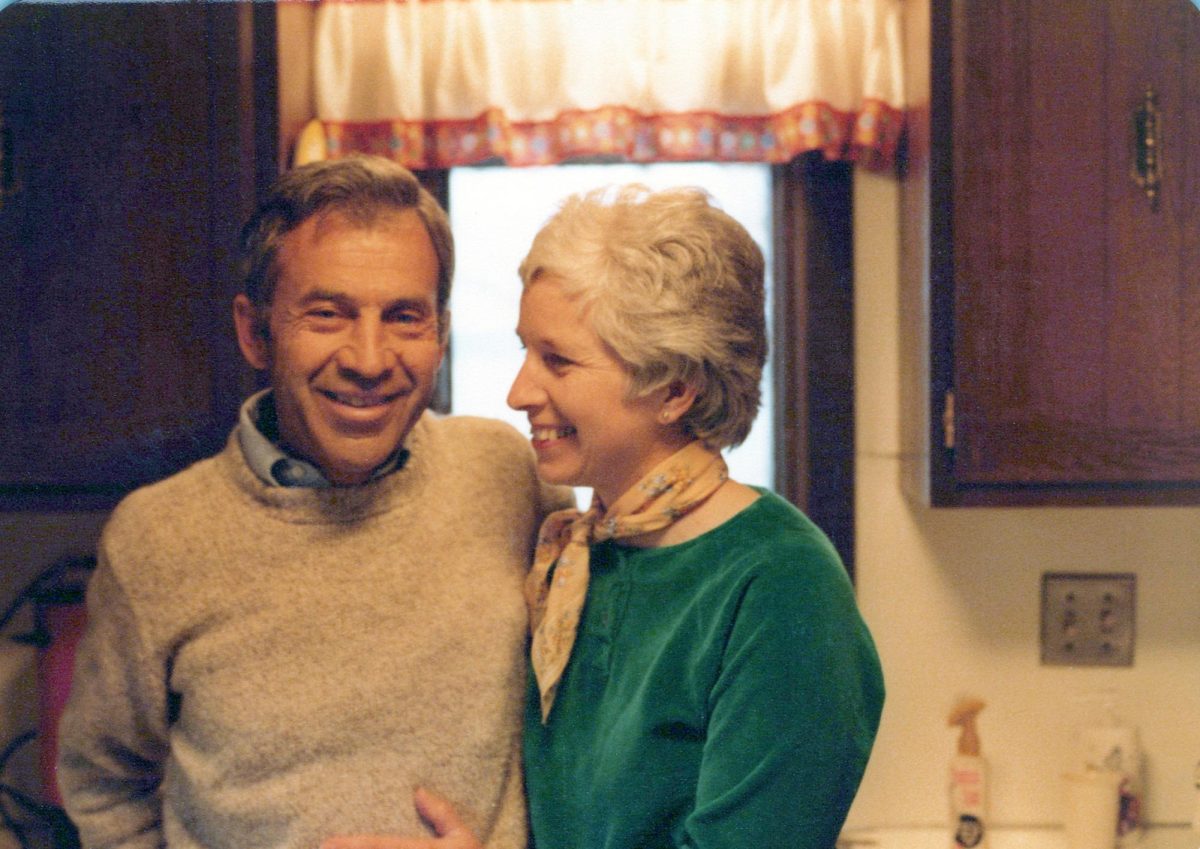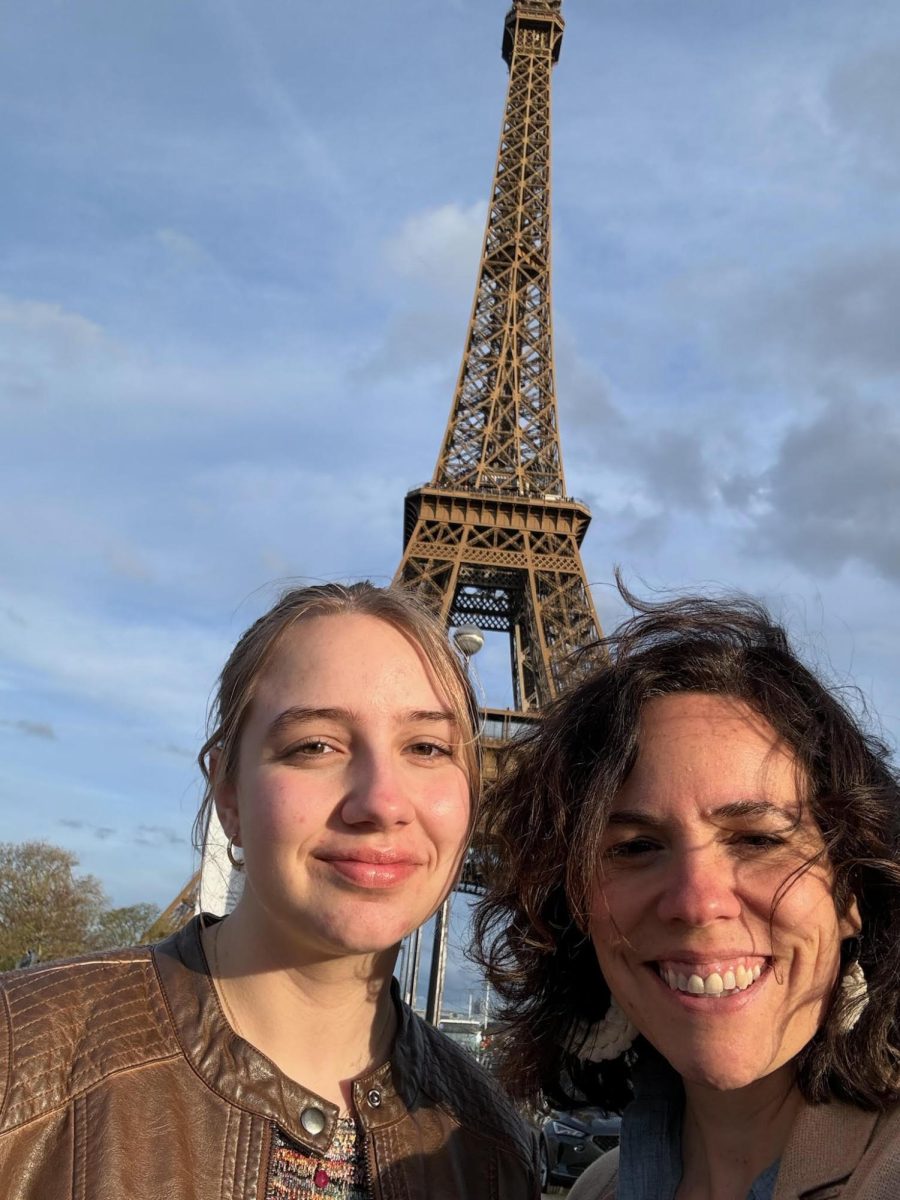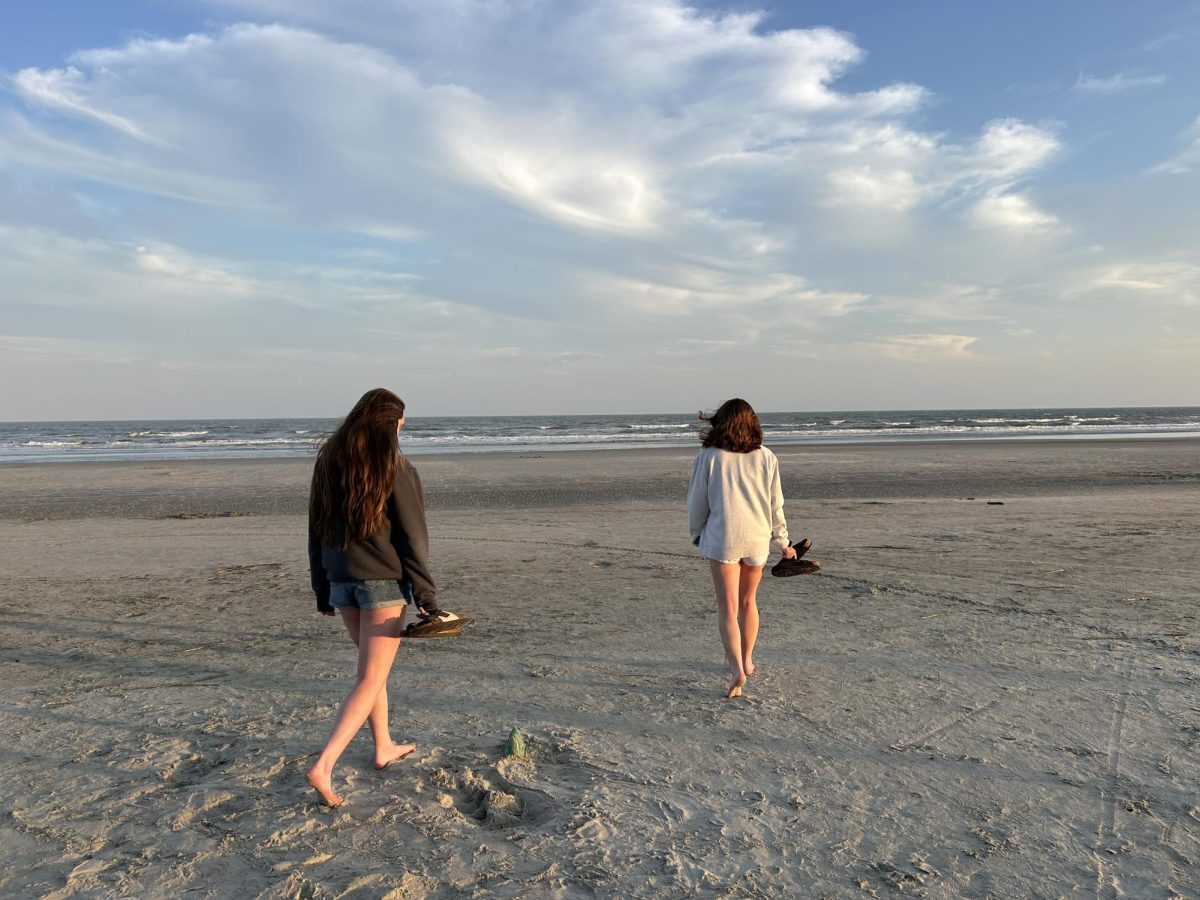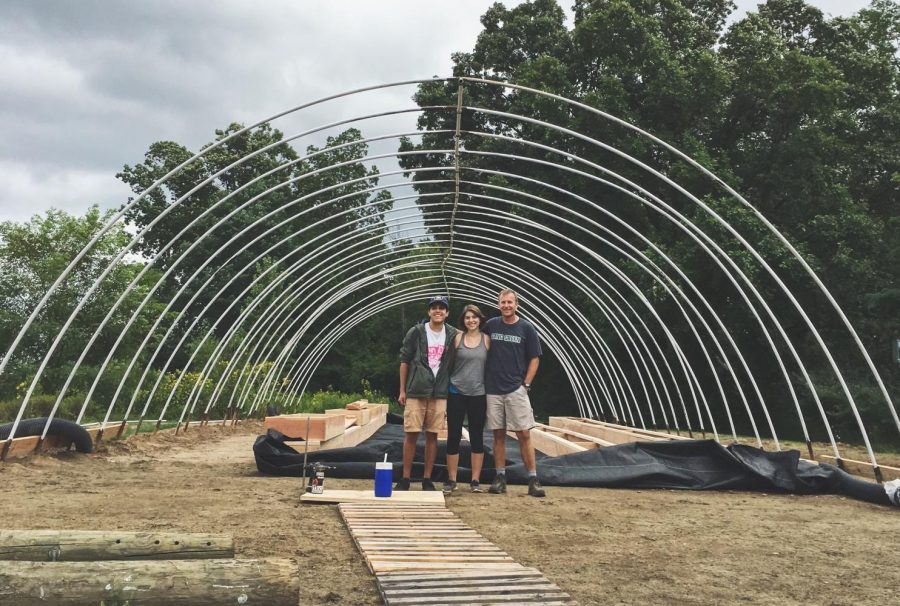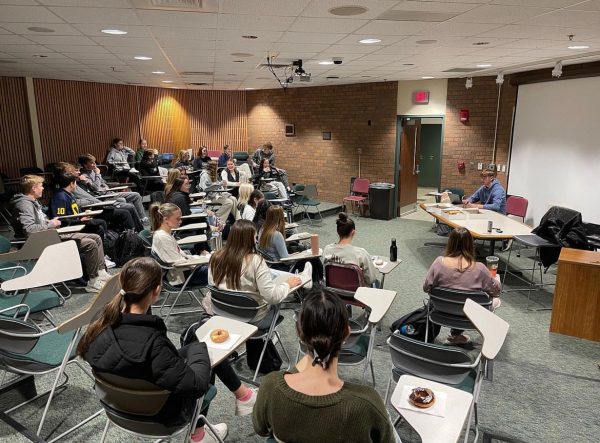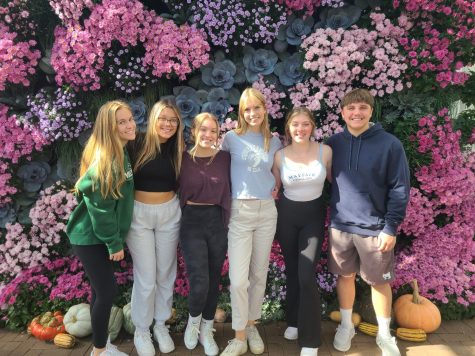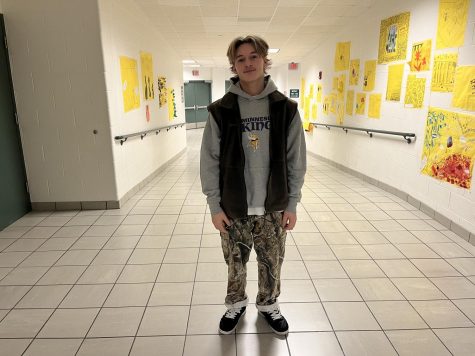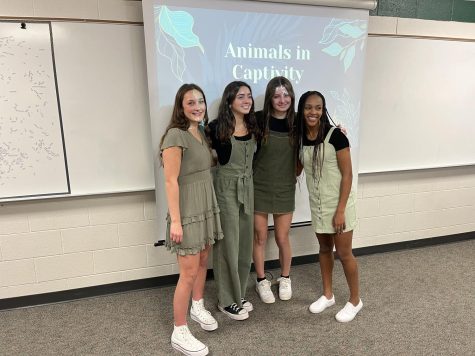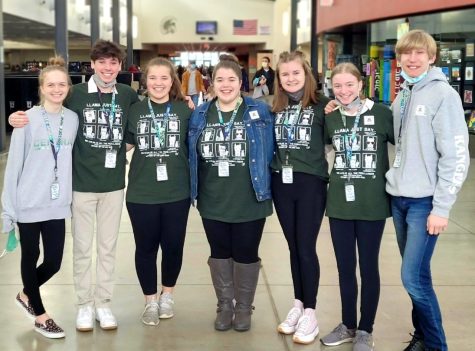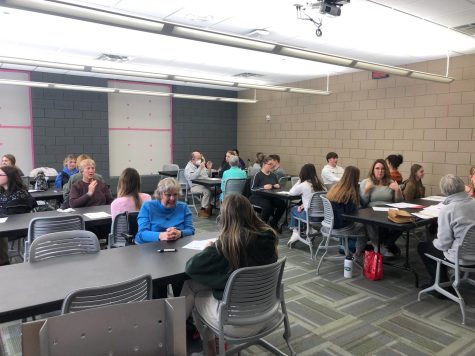FHC’s greenhouse strives to improve and connect the community
Mother’s Day flower sales, homegrown vegetables sold in the cafeteria, and new flora lining the entry steps to the school. This is the ultimate goal of AP Environmental Science teacher Chad Scholten for his work-in-progress project: the greenhouse.
Scholten proposed his idea to two students who were in his independent study last year, Ally Brown and Thomas Barfuss, and from there, the greenhouse was started. Brown called local farms to track down a frame for the hoop house, which is the type of greenhouse required for the project. Koetsier’s Greenhouse was willing to donate its frame as long as Brown and Barfuss would take responsibility to remove it from the ground and transport it back to the school themselves.
The removal process took 20 students and a total of four days, with five to six people going at a time. In the spring, they painted the frame and de-rusted the pipes with dish soap and potatoes.
“Ally and I spent hours in that dinky courtyard outside the art rooms rubbing metal poles with potatoes,” Barfuss said. “It’s a memory I won’t forget.”
Two months later, the labor stopped, and the building of the greenhouse began.
The area where the greenhouse would be placed was ready for a six-foot deep, twenty-foot wide, and forty-foot long hole. The poles that they spent so much time cleaning were ready to be used to heat the greenhouse. By the end of the summer, the frame for the greenhouse was up and ready for this year’s students to take over.
“Seeing the frame of the greenhouse standing after months of work had to be one of the proudest moments of my high school career,” Barfuss said. “I can confidently say there is no better way I could have spent my senior year.”
When the seniors of 2016 graduated, it was time for a new batch of students to work on the greenhouse and hopefully finish it.
During the past year, senior Kyla Souza was in Scholten’s APES class and was asked to move the greenhouse to its current location. Since she helped in the moving process, Kyla became a bigger part of the project. She, along with three other students, now have an independent study with Scholten. Together, they have labeled themselves “the founding sisters.” They have done everything except put the plants in the greenhouse, but they will be planted and ready to go once the greenhouse is enclosed.
Being outside and a part of the project has impacted Kyla in all aspects of her life, whether that be choosing her major or taking a break from the day to spend an hour in the sun doing what she loves.
“I’m planning on going into environmental engineering now because of APES,” Kyla said. “Being a part of the greenhouse helped [me decide to do] that.”
The greenhouse was a big part of Kyla’s junior and senior year, and her experiences all stem from Scholten’s mindset of being less academic and more practical.
Scholten wanted to take all of the lessons he could teach out of the textbook and apply it in a hands-on learning style that would keep his students engaged. His project is a lot of work, but it’s an extension of the lessons he teaches in his classroom. Instead of a lecture and a diagram about how plants grow, Scholten can teach his students in the greenhouse surrounded by real-life examples and abundant forms of life.
“If I’m bored, I know my students are bored,” Scholten said. “Let’s make [learning] practical; let’s apply it.”
To further apply their knowledge, the greenhouse is available for all students to use. Scholten wants everyone to be a part of it in some way, and a long-term goal is having fresh vegetables being sold in the cafeteria for anyone to purchase. Community members could purchase flats of flowers or vegetables to grow on their own, and come Mother’s Day, there could possibly even be a flower sale.
“It’s not just a science class or APES class,” Scholten said. “If we put the stuff in the cafeteria, then everyone is connected with it. It’s truly our school’s greenhouse.”
Scholten’s aspirations wouldn’t be possible without the student participation, linking everyone to the greenhouse. A multitude of classes have lent their helping hands, like the strength and conditioning class doing the heavy lifting, and the advanced woodworking class building the ends of the frame.
I sincerely hope that current and future students take as much pride in this greenhouse and the work being done inside of it as I do.
— Ally Brown
Eventually, a potential eleven curricular classes can utilize the finished greenhouse. The health classes could make recipe cards for the vegetables sold in the cafeteria, and business and marketing could help sell the products. With all of these options, a variety of classes have the opportunity to be part of the greenhouse in some way.
“I don’t know if it will ever be a class of 30 kids doing this because I don’t know if there’s enough work for 30 people in any given hour,” Scholten said. “But, throughout the course of the day, you could tie in a little bit here and there.”
Assistant Principal John DeStefano, much like Scholten and his students, is in favor of the great potential the greenhouse has. With engaging activities and real-life applications, students can learn in a more effective way.
DeStefano understands that different students learn in varying ways.
“As an administration team, we think it’s fantastic,” DeStefano said. “Just changing the environment is enough for kids to be even more engaged in what we’re doing.”
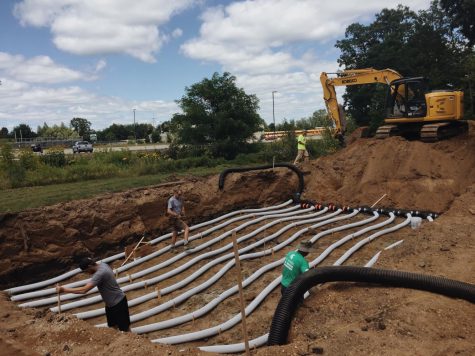
FHC’s administration realizes what the greenhouse can do for the multitude of students, and anyone who worked on the project can agree.
While working on the project, Barfuss learned many valuable lessons that a textbook couldn’t possibly teach. The hands-on learning includes the actual building of the greenhouse, not just the utilization.
Brown spent her senior year putting a lot of time and effort into the project she doubted would even get finished, but in the end, she knew that her hard work would pay off. Knowing the final product would be enjoyed by everyone would make it all worthwhile.
“I am so honored that my lasting impact at FHC is something that all of the current students have the opportunity to enjoy and learn from,” Brown said. “I sincerely hope that current and future students take as much pride in this greenhouse and the work being done inside of it as I do.”
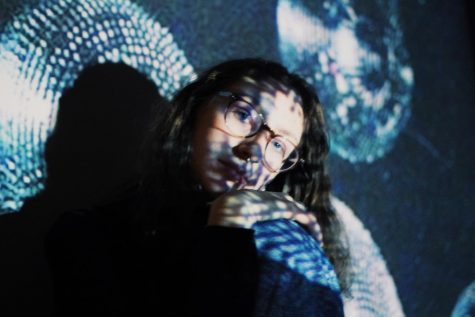
Abby Wright is a senior entering her fourth and final year on staff for The Central Trend, and second year as Editor in Chief. She values art, Spotify...













